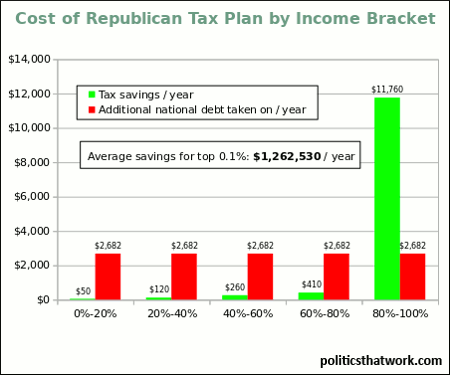
Description: This graph shows how much additional national debt each working person would accumulate per year under the tax proposal put forward by the House Republicans in 2017 and compares that amount to the tax savings people in each income bracket would see under that plan.
Sources: Tax Policy Center
Data: Excel
Last updated: February 20, 2017





